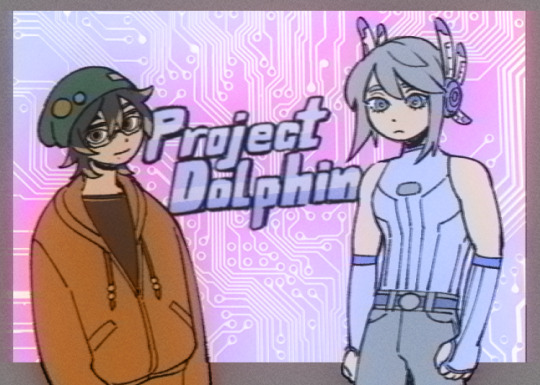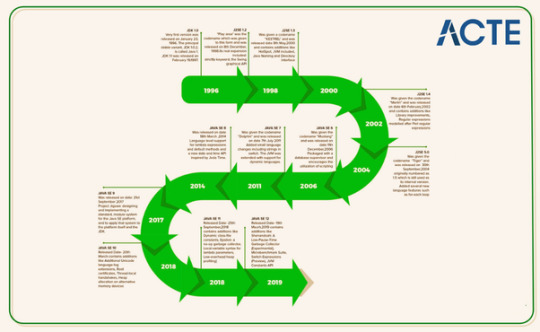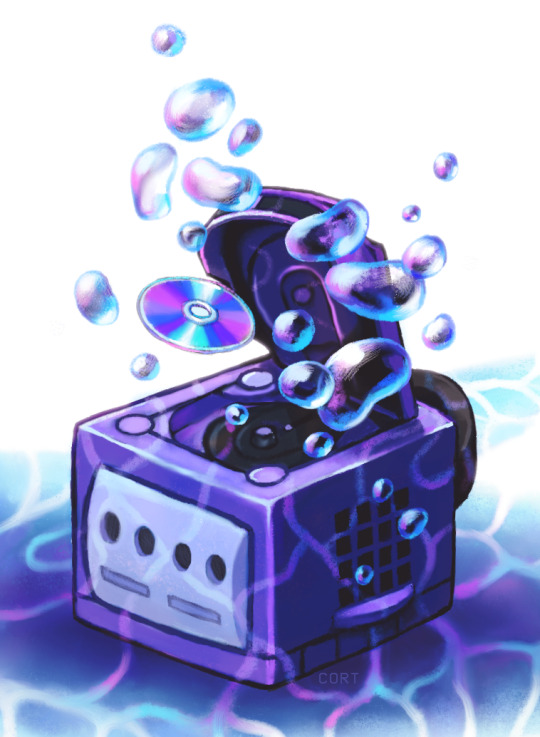#Codename: Project Dolphin
Explore tagged Tumblr posts
Text




played codename proj dolphin yesterday very awesome setting^_^))b
#myart#isthere a tag for this.lets investigate#Codename: Project Dolphin#yippiee#FUCK I FORGOR RUDYS GLASSES...........................i forgot his blonde tips before that im goingto cry
213 notes
·
View notes
Text

Tethered
85 notes
·
View notes
Text
The Launch Details of the 64DD
This was originally published on 64dd.org on October 15th, 2021.
There’s a lot of confusion about the release and price of the 64DD and what was the Randnet service about, so it’s time to talk about that, because it is more interesting than you think.
More info after the break.
Original Plans
Nintendo had announced the 64DD in 1995, the Nintendo 64 hadn’t even come out yet that they already announced the addon for it. The purpose was to bring higher capacity and big rewritable storage, as well as making it expandable through cartridges (such as the Modem Cassette and Capture Cassette for exemple).
The 64DD was properly introduced in 1997 alongside games, with a slated release for summer 1997 in Japan and a pricing between $100 and $199. Miyamoto himself even estimates the price to be $120. This might be about what the 64DD would cost on its own in retail stores. However this isn’t how it ended up to be.
Randnet
In around June 1999, in the wake of the launch of the 64DD, Recruit and Nintendo would establish their second joint company called RandnetDD Co., Ltd., the first one was Marigul Management, which would provide financing for game companies.
RandnetDD would handle all marketing and sales of the 64DD including software, management and provider of the Randnet service, which would be internet access, email, online game networks including matchmaking, as well as a content provider for newspapers, music, and more. This would mean that RandnetDD’s sole existence is for the 64DD and its service, making the 64DD bound to RandnetDD and one wouldn’t sell without the other as part of their plans.
Later on, RandnetDD announced their plans for the Randnet service membership to start in December 1999, for the first year, for 2500 yen (~$23) per month, you would rent-to-own the Randnet Starter Kit, comprised of the 64DD itself, an Expansion Pak, the Modem Cassette and Cable, and Randnet Disk (would be sent later), as well as a selection of titles, and of course, access to the Randnet service. For 3300 yen (~$30) per month, you could rent all of the above but also have a Clear Black Nintendo 64 unit. A 12-month flat rate plan was introduced later for 30000 yen (~$290) and 39600 yen (~$380) (including Clear Black Nintendo 64 unit).
All years after the first would cost 1500 yen (~$14) per month, and all hardware and software ownership would be transferred to the member from that point. RandnetDD actually states that very clearly. Of course, any dialup access fees aren’t included here, but they did set up a nationwide phone number in Tokyo with a 50 yen ($0.46) per minute flat rate, although other phone numbers were available with different fees depending on the distance or time of day.
The membership application form could be managed within select stores, in call centers, and by fax, and was limited up to 100000 members. This wouldn’t be as going as they hoped.
The Reality
So to make it clear, the 64DD has never been this expensive, the subscription plan included the price of everything you would get from Randnet, it would have been a constant stream of software that you would own, and services. RandnetDD wanted to be innovative, and essentially you could have owned every 64DD game, and they really tried to be competitive.
Every single consumer 64DD title and device released so far were only for Randnet members, I have looked for alternatives but there’s only evidence of 64DDs only being sold through Randnet.
Unfortunately for Randnet, the 64DD was released after the Dreamcast had come out worldwide, and mere months after launch, the Playstation 2 would make its debut in Japan. For me it just seems impossible to beat the next gen hardware with this, especially when the project codenamed Dolphin was already talked about, to be released in 2001 as the GameCube.
I’d say the closest comparison to the 64DD’s launch that I can make is the PlayDate, where you buy the hardware but also an entire season of games.
Sources: https://www.ign.com/articles/1997/07/26/64dd-to-sell-for-120 https://www.nintendo.co.jp/corporate/release/1997-99/990611a.html https://web.archive.org/web/20000226213125/http://www.randnetdd.co.jp:80/apply/index.html https://web.archive.org/web/20000419022955/http://www.randnetdd.co.jp/tempo.html https://www.ign.com/articles/2001/02/10/everything-about-the-64dd https://www.ign.com/articles/1999/12/16/ign64s-ultimate-64dd-faq https://www.ign.com/articles/1999/12/17/64dd-goes-retail
18 notes
·
View notes
Note
whys it call3d project break :?
wannida. it's a (barely) tentative codename like how nintendo consoles got named internally. N64 was project ultra. gamecube was project dolphin. wii was project revolution
5 notes
·
View notes
Text
wait the gamecube was codenamed project dolphin and the gc/wii emulator is called dolphin emulator omg
3 notes
·
View notes
Text
8 Random Codenames
Deliverable Eel
Reliable Seamless Moth
Eternal Amber Civet
Cheerful Blast Processing Salmon
Just Best Practice Swan
Orange Lizard
Turquoise Dolphin
Project Verbose Butterfly Benchmark
0 notes
Text
"From Oak to Java: Tracing the Evolution of a Revolutionary Programming Language"
Java's Origins:
Java, an Object-Oriented programming language, was conceived by James Gosling in the early 1990s, with the goal of creating a language for digital devices like set-top boxes and televisions. Initially considering C++ but facing memory constraints, Gosling shifted to creating a new platform, initially named "Greentalk," with the file extension .gt, which later transformed into "OAK."

Choosing "Oak":
The name "Oak" was inspired by an oak tree near Gosling's office, symbolizing strength and also being the national tree of several countries. However, due to trademark conflicts with Oak Technologies, the project was eventually renamed "JAVA" after an extensive brainstorming session, which included several other options like DNA, SILK, and RUBY. The unique and memorable nature of "Java," derived from a type of coffee bean, led to its selection, a name inspired by a coffee break near Gosling's office.
Java's Journey:
Built on principles of robustness, portability, platform independence, high performance, and multithreading, Java was recognized as one of the Ten Best Products of 1995 by TIME MAGAZINE. Presently, Java finds application in various domains such as internet programming, mobile devices, games, and e-business solutions.
Java's Evolution:
Over the years, Java has undergone significant transformations since JDK 1.0, with numerous additions and extensions to the standard library, expanding from a few hundred classes in JDK 1.0 to over three thousand in J2SE 5.
Highlighting Their Key Developments and Enhancements:

JDK Beta (1995): This was an early stage in Java's development, representing the initial testing and experimentation phase.
JDK 1.0 (January 1996): The Very first version was released on January 23, 1996. The principal stable variant, JDK 1.0.2, is called Java 1.
JDK 1.1 (February 1997):
It was released on February 19, 1997. There were many additions in JDK 1.1 as compared to version 1.0 such as
· A broad retooling of the AWT occasion show
· Inner classes added to the language
· JavaBeans
· JDBC
· RMI
J2SE 1.2 (December 1998):
“Play area” was the codename which was given to this form and was released on 8th December 1998. Its real expansion included: strictfp keyword
· the Swing graphical API was coordinated into the centre classes
· Sun’s JVM was outfitted with a JIT compiler out of the blue
· Java module
· Java IDL, an IDL usage for CORBA interoperability
· Collections system
J2SE 1.3 (May 2000):
Codename- “KESTREL” Release Date- 8th May 2000 Additions:
· HotSpot JVM included
· Java Naming and Directory Interface
· JPDA
· JavaSound
· Synthetic proxy classes
J2SE 1.4 (February 2002):
Codename- “Merlin” Release Date- 6th February 2002 Additions: Library improvements
· Regular expressions modelled after Perl regular expressions
· The image I/O API for reading and writing images in formats like JPEG and PNG
· Integrated XML parser and XSLT processor (JAXP) (specified in JSR 5 and JSR 63)
· Preferences API (java.util.prefs)
· Public Support and security updates for this version ended in October 2008.
J2SE 5.0 (September 2004):
Codename- “Tiger” Release Date- “30th September 2004”
Originally numbered as 1.5 which is still used as its internal version. Added several new language features such as
· for-each loop
· Generics
· Autoboxing
· Var-args
Java SE 6 (December 2006):
Codename- “Mustang” Released Date- 11th December 2006 Packaged with a database supervisor and encourages the utilization of scripting languages with the JVM. Replaced the name J2SE with java SE and dropped the .0 from the version number. Additions:
· Upgrade of JAXB to version 2.0: Including integration of a StAX parser.
· Support for pluggable annotations (JSR 269).
· JDBC 4.0 support (JSR 221)
Java SE 7 (July 2011):
Codename- “Dolphin” Release Date- 7th July 2011 Added small language changes including strings in the switch. The JVM was extended with support for dynamic languages. Additions:
· Compressed 64-bit pointers.
· Binary Integer Literals.
· Upstream updates to XML and Unicode.
Java SE 8 (March 2014): Released with the codename "Spider," this version introduced language level support for lambda expressions and default methods. It also included a new date and time API inspired by Joda Time.
Java SE 9 (September 2017): This version introduced Project Jigsaw, which aimed to modularize the Java SE platform. It implemented a standard module system for the Java SE platform and the JDK.
Java SE 10 (March 2018):
Released Date- 20th March Addition:
· Additional Unicode language-tag extensions
· Root certificates
· Thread-local handshakes
· Heap allocation on alternative memory devices
· Remove the native-header generation tool – javah.
· Consolidate the JDK forest into a single repository.
Java SE 11 (September 2018):
Released Date- 25th September, 2018 Additions-
· Dynamic class-file constants
· Epsilon: a no-op garbage collector
· The local-variable syntax for lambda parameters
· Low-overhead heap profiling
· HTTP client (standard)
· Transport Layer Security (TLS) 1.3
· Flight recorder
Java SE 12 (March 2019):
Released Date- 19th March 2019 Additions-
· Shenandoah: A Low-Pause-Time Garbage Collector (Experimental)
· Microbenchmark Suite
· Switch Expressions (Preview)
· JVM Constants API
· One AArch64 Port, Not Two
· Default CDS Archives
In conclusion, Java's journey from its early inception as "Oak" to its eventual renaming as "Java" represents a fascinating tale of innovation and adaptability. Java's evolution, marked by its recognition as one of the Ten Best Products of 1995 by TIME MAGAZINE and its widespread adoption across diverse industries, is a testament to its enduring significance and impact on the modern technological landscape. As Java continues to evolve with each version, it remains a cornerstone of the programming world, embodying the principles of robustness, flexibility, and adaptability that have propelled it to its current prominence.
For individuals aiming to enhance their Java expertise, exploring the offerings of ACTE Technologies is highly recommended. With proficient instructors well-versed in Java instruction, ACTE Technologies provides a range of flexible learning options, accommodating both online and in-person preferences. Java program at ACTE Technologies includes certification options and support in finding job placements.
1 note
·
View note
Photo
the nintendo gamecube was originally developed under the codename Project Dolphin


dolphin
4K notes
·
View notes
Text
IELTS Practice Cambridge Book 7 Academic Reading Test 1 C7T1
Let’s Go Bats A Bats have a problem: how to find their way around in the dark. They hunt at night, and cannot use light to help them find prey and avoid obstacles. You might say that this is a problem of their own making, one that they could avoid simply by changing their habits and hunting by day. But the daytime economy is already heavily exploited by other creatures such as birds. Given that there is a living to be made at night, and given that alternative daytime trades are thoroughly occupied, natural selection has favoured bats that make a go of the night-hunting trade. It is probable that the nocturnal trades go way back in the ancestry of all mammals. In the time when the dinosaurs dominated the daytime economy, our mammalian ancestors probably only managed to survive at all because they found ways of scraping a living at night. Only after the mysterious mass extinction of the dinosaurs about 65 million years ago were our ancestors able to emerge into the daylight in any substantial numbers. B Bats have an engineering problem: how to find their way and find their prey in the absence of light. Bats are not the only creatures to face this difficulty today. Obviously the night-flying insects that they prey on must find their way about somehow. Deep-sea fish and whales have little or no light by day or by night. Fish and dolphins that live in extremely muddy water cannot see because, although there is light, it is obstructed and scattered by the dirt in the water. Plenty of other modern animals make their living in conditions where seeing is difficult or impossible. C Given the questions of how to manoeuvre in the dark, what solutions might an engineer consider? The first one that might occur to him is to manufacture light, to use a lantern or a searchlight. Fireflies and some fish (usually with the help of bacteria) have the power to manufacture their own light, but the process seems to consume a large amount of energy. Fireflies use their light for attracting mates. This doesn’t require a prohibitive amount of energy: a male’s tiny pinprick of light can be seen by a female from some distance on a dark night, since her eyes are exposed directly to the light source itself. However using light to find one’s own way around requires vastly more energy, since the eyes have to detect the tiny fraction of the light that bounces off each part of the scene. The light source must therefore be immensely brighter if it is to be used as a headlight to illuminate the path, than if it is to be used as a signal to others. In any event, whether or not the reason is the energy expense, it seems to be the case that, with the possible exception of some weird deep-sea fish, no animal apart from man uses manufactured light to find its way about. D What else might the engineer think of? Well, blind humans sometimes seem to have an uncanny sense of obstacles in their path. It has been given the name ‘facial vision’, because blind people have reported that it feels a bit like the sense of touch, on the face. One report tells of a totally blind boy who could ride his tricycle at good speed round the block near his home, using facial vision. Experiments showed that, in fact, facial vision is nothing to do with touch or the front of the face, although the sensation may be referred to the front of the face, like the referred pain in a phantom limb. The sensation of facial vision, it turns out, really goes in through the ears. Blind people, without even being aware of the fact, are actually using echoes of their own footsteps and of other sounds, to sense the presence of obstacles. Before this was discovered, engineers had already built instruments to exploit the principle, for example to measure the depth of the sea under a ship. After this technique had been invented, it was only a matter of time before weapons designers adapted it for the detection of submarines. Both sides in the Second World War relied heavily on these devices, under such codenames as Asdic (British) and Sonar (American), as well as Radar (American) or RDF (British), which uses radio echoes rather than sound echoes. E The Sonar and Radar pioneers didn’t know it then, but all the world now knows that bats, or rather natural selection working on bats, had perfected the system tens of millions of years earlier, and their radar achieves feats of detection and navigation that would strike an engineer dumb with admiration. It is technically incorrect to talk about bat ‘radar’, since they do not use radio waves. It is sonar but the underlying mathematical theories of radar and sonar are very similar and much of our scientific understanding of the details of what bats are doing has come from applying radar theory to them. The American zoologist Donald Griffin, who was largely responsible for the discovery of sonar in bats, coined the term ‘echolocation’ to cover both sonar and radar, whether used by animals or by human instruments. Questions 1-5 Reading Passage 1 has five paragraphs, A-E. Which paragraph contains the following information? Write the correct letter. A-E, in boxes 1-5 on your answer sheet. NB You may use any letter more than once. 1. Examples of wildlife other than bats which do not rely on vision to navigate by 2. How early mammals avoided dying out 3. Why bats hunt in the dark 4. How a particular discovery has helped our understanding of bats 5. Early military uses of echolocation Questions 6-9 Complete the summary below. Choose ONE WORD ONLY from the passage for each answer. Facial Vision Blind people report that so-called ‘facial vision’ is comparable to the sensation of touch on the face. In fact, the sensation is more similar to the way in which pain from a (6)……………………arm or leg might be felt. The ability actually comes from perceiving (7)………..…………..through the ears. However, even before this was understood, the principle had been applied in the design of instruments which calculated the (8)……….…………..of the seabed. This was followed by a wartime application in devices for finding (9)……………… Questions 10-13 Complete the sentences below. Choose NO MORE THAN TWO WORDS from the passage for each answer. 10 Long before the invention of radar,…………… had resulted in a sophisticated radar-like system in bats. 11 Radar is an inaccurate term when referring to bats because………………are not used in their navigation system. 12 Radar and sonar are based on similar……………………. 13 The word ‘echolocation’ was first used by someone working as a…………………. Download All Cambridge IELTS Books Pdf + Audio For Free Cambridge 1-14 (Free Download) Making Every Drop Count A The history of human civilisation is entwined with the history of the ways we have learned to manipulate water resources. As towns gradually expanded, water was brought from increasingly remote sources, leading to sophisticated engineering efforts such as dams and aqueducts. At the height of the Roman Empire, nine major systems, with an innovative layout of pipes and well-built sewers, supplied the occupants of Rome with as much water per person as is provided in many parts of the industrial world today. B During the industrial revolution and population explosion of the 19th and 20th centuries, the demand for water rose dramatically. Unprecedented construction of tens of thousands of monumental engineering projects designed to control floods, protect clean water supplies, and provide water for irrigation and hydropower brought great benefits to hundreds of millions of people. Food production has kept pace with soaring populations mainly because of the expansion of artificial irrigation systems that make possible the growth of 40 % of the world’s food. Nearly one fifth of all the electricity generated worldwide is produced by turbines spun by the power of falling water. C Yet there is a dark side to this picture: despite our progress, half of the world’s population still suffers, with water services inferior to those available to the ancient Greeks and Romans. As the United Nations report on access to water reiterated in November 2001, more than one billion people lack access to clean drinking water; some two and a half billion do not have adequate sanitation services. Preventable water-related diseases kill an estimated 10,000 to 20,000 children every day, and the latest evidence suggests that we are falling behind in efforts to solve these problems. D The consequences of our water policies extend beyond jeopardising human health. Tens of millions of people have been forced to move from their homes – often with little warning or compensation – to make way for the reservoirs behind dams. More than 20 % of all freshwater fish species are now threatened or endangered because dams and water withdrawals have destroyed the free-flowing river ecosystems where they thrive. Certain irrigation practices degrade soil quality and reduce agricultural productivity. Groundwater aquifers are being pumped down faster than they are naturally replenished in parts of India, China, the USA and elsewhere. And disputes over shared water resources have led to violence and continue to raise local, national and even international tensions. E At the outset of the new millennium, however, the way resource planners think about water is beginning to change. The focus is slowly shifting back to the provision of basic human and environmental needs as top priority – ensuring ‘some for all,’ instead of ‘more for some’. Some water experts are now demanding that existing infrastructure be used in smarter ways rather than building new facilities, which is increasingly considered the option of last, not first, resort. This shift in philosophy has not been universally accepted, and it comes with strong opposition from some established water organisations. Nevertheless, it may be the only way to address successfully the pressing problems of providing everyone with clean water to drink, adequate water to grow food and a life free from preventable water-related illness. F Fortunately – and unexpectedly – the demand for water is not rising as rapidly as some predicted. As a result, the pressure to build new water infrastructures has diminished over the past two decades. Although population, industrial output and economic productivity have continued to soar in developed nations, the rate at which people withdraw water from aquifers, rivers and lakes has slowed. And in a few parts of the world, demand has actually fallen. G What explains this remarkable turn of events? Two factors: people have figured out how to use water more efficiently, and communities are rethinking their priorities for water use. Throughout the first three-quarters of the 20th century, the quantity of freshwater consumed per person doubled on average; in the USA, water withdrawals increased tenfold while the population quadrupled. But since 1980, the amount of water consumed per person has actually decreased, thanks to a range of new technologies that help to conserve water in homes and industry. In 1965, for instance, Japan used approximately 13 million gallons of water to produce $1 million of commercial output; by 1989 this had dropped to 3.5 million gallons (even accounting for inflation) – almost a quadrupling of water productivity. In the USA, water withdrawals have fallen by more than 20 % from their peak in 1980. H On the other hand, dams, aqueducts and other kinds of infrastructure will still have to be built, particularly in developing countries where basic human needs have not been met. But such projects must be built to higher specifications and with more accountability to local people and their environment than in the past. And even in regions where new projects seem warranted, we must find ways to meet demands with fewer resources, respecting ecological criteria and to a smaller budget. Questions 14-20 Reading Passage 2 has seven paragraphs, A-H. Choose the correct heading for paragraphs A and C-H from the list of headings below. Write the correct number, i-xi, in boxes 14-20 on your answer sheet. List of Headings i Scientists’ call for revision of policy ii An explanation for reduced water use iii How a global challenge was met iv Irrigation systems fall into disuse v Environmental effects vi The financial cost of recent technological improvements vii The relevance to health viii Addressing the concern over increasing populations ix A surprising downward trend in demand for water x The need to raise standards xi A description of ancient water supplies 14 Paragraph A 15 Paragraph C 16 Paragraph D 17 Paragraph E 18 Paragraph F 19 Paragraph G 20 Paragraph H Questions 21-26 Do the following statements agree with information given in Reading Passage 2. In boxes 21-26 on your answer sheet, write YES if the statement agrees with the claims of the writer NO if the statement contradicts the claims of the writer NOT GIVEN if it is impossible to say what the writer thinks about this 21 Water use per person is higher in the industrial world than it was in Ancient Rome. 22 Feeding increasing populations is possible due primarily to improved irrigation systems. 23 Modern water systems imitate those of the ancient Greeks and Romans. 24 Industrial growth is increasing the overall demand for water. 25 Modern technologies have led to reduction in the domestic water consumption. 26 In the future, governments should maintain ownership of water infrastructures. EDUCATING PSYCHE Educating Psyche by Bernie Neville is a book which looks at radical new approaches to learning, describing the effects of emotion, imagination and the unconscious on learning. One theory discussed in the book is that proposed by George Lozanov, which focuses on the power of suggestion. Lozanov’s instructional technique is based on the evidence that the connections made in the brain through unconscious processing (which he calls non-specific mental reactivity) are more durable than those made through conscious processing. Besides the laboratory evidence for this, we know from our experience that we often remember what we have perceived peripherally, long after we have forgotten what we set out to learn. If we think of a book we studied months or years ago, we will find it easier to recall peripheral details – the colour, the binding, the typeface, the table at the library where we sat while studying it – than the content on which we were concentrating. If we think of a lecture we listened to with great concentration, we will recall the lecturer’s appearance and mannerisms, our place in the auditorium, the failure of the air-conditioning, much more easily than the ideas we went to learn. Even if these peripheral details are a bit elusive, they come back readily in hypnosis or when we relive the event imaginatively, as in psychodrama. The details of the content of the lecture, on the other hand, seem to have gone forever. This phenomenon can be partly attributed to the common counterproductive approach to study (making extreme efforts to memorise, tensing muscles, inducing fatigue), but it also simply reflects the way the brain functions. Lozanov therefore made indirect instruction (suggestion) central to his teaching system. In suggestopedia, as he called his method, consciousness is shifted away from the curriculum to focus on something peripheral. The curriculum then becomes peripheral and is dealt with by the reserve capacity of the brain. The suggestopedic approach to foreign language learning provides a good illustration. In its most recent variant (1980), it consists of the reading of vocabulary and text while the class is listening to music. The first session is in two parts. In the first part, the music is classical (Mozart, Beethoven, Brahms) and the teacher reads the text slowly and solemnly, with attention to the dynamics of the music. The students follow the text in their books. This is followed by several minutes of silence. In the second part, they listen to baroque music (Bach, Corelli, Handel) while the teacher reads the text in a normal speaking voice. During this time they have their books closed. During the whole of this session, their attention is passive; they listen to the music but make no attempt to learn the material. Beforehand, the students have been carefully prepared for the language learning experience. Through meeting with the staff and satisfied students they develop the expectation that learning will be easy and pleasant and that they will successfully learn several hundred words of the foreign language during the class. In a preliminary talk, the teacher introduces them to the material to be covered, but does not ‘teach’ it. Likewise, the students are instructed not to try to learn it during this introduction. Some hours after the two-part session, there is a follow-up class at which the students are stimulated to recall the material presented. Once again the approach is indirect. The students do not focus their attention on trying to remember the vocabulary, but focus on using the language to communicate (e.g. through games or improvised dramatisations). Such methods are not unusual in language teaching. What is distinctive in the suggestopedic method is that they are devoted entirely to assist recall. The ‘learning’ of the material is assumed to be automatic and effortless, accomplished while listening to music. The teacher’s task is to assist the students to apply what they have learned paraconsciously, and in doing so to make it easily accessible to consciousness. Another difference from conventional teaching is the evidence that students can regularly learn 1000 new words of a foreign language during a suggestopedic session, as well as grammar and idiom. Lozanov experimented with teaching by direct suggestion during sleep, hypnosis and trance states, but found such procedures unnecessary. Hypnosis, yoga, Silva mind-control, religious ceremonies and faith healing are all associated with successful suggestion, but none of their techniques seem to be essential to it. Such rituals may be seen as placebos. Lozanov acknowledges that the ritual surrounding suggestion in his own system is also a placebo, but maintains that without such a placebo people are unable or afraid to tap the reserve capacity of their brains. Like any placebo, it must be dispensed with authority to be effective. Just as a doctor calls on the full power of autocratic suggestion by insisting that the patient take precisely this white capsule precisely three times a day before meals, Lozanov is categoric in insisting that the suggestopedic session be conducted exactly in the manner designated, by trained and accredited suggestopedic teachers. While suggestopedia has gained some notoriety through success in the teaching of modern languages, few teachers are able to emulate the spectacular results of Lozanov and his associates. We can, perhaps, attribute mediocre results to an inadequate placebo effect. The students have not developed the appropriate mind set. They are often not motivated to learn through this method. They do not have enough ‘faith’. They do not see it as ‘real teaching’, especially as it does not seem to involve the ‘work’ they have learned to believe is essential to learning. Questions 27-30 Choose the correct letter A, B, C or D. Write the correct letter in boxes 27-30 on your answer sheet. 27 The book Educating Psyche is mainly concerned with A the power of suggestion in learning B a particular technique for leaning based on emotions C the effects of emotion on the imagination and the unconscious D ways of learning which are not traditional 28 Lozanov’s theory claims that, when we try to remember things, A unimportant details are the easiest to recall B concentrating hard produces the best results C the most significant facts are most easily recalled D peripheral vision is not important 29 In this passage, the author uses the examples of a book and a lecture to illustrate that A both these are important for developing concentration B his theory about methods of learning is valid C reading is a better technique for learning than listening D we can remember things more easily under hypnosis 30 Lozanov claims that teachers should train students to A memorise details of the curriculum B develop their own sets of indirect instructions C think about something other than the curriculum content D avoid overloading the capacity of the brain Questions 31-36 Do the following statement agree with the information given in Reading Passage 3? In boxes 31-36 on your answer sheet, write: TRUE if the statement agrees with the information FALSE if the statement contradicts the information NOT GIVEN if there is no information on this 31 In the example of suggestopedic teaching in the fourth paragraph, the only variable that changes is the music. 32 Prior to the suggestopedia class, students are made aware that the language experience will be demanding. 33 In the follow-up class, the teaching activities are similar to those used in conventional classes. 34 As an indirect benefit, students notice improvements in their memory. 35 Teachers say they prefer suggestopedia to traditional approaches to language teaching. 36 Students in a suggestopedia class retain more new vocabulary than those in ordinary classes. Questions 37-40 Complete the summary using the list of words, A-K, below. Write the correct letter A-K in boxes 37-40 on your answer sheet. Sugestopedia uses a less direct method of suggestion than other techniques such as hypnosis. However, Lozanov admits that a certain amount of (37)……………… is necessary in order to convince students, even if this is just a (38)……………………. Furthermore, if the method is to succeed, teachers must follow a set procedure. Although Lozanov’s method has become quite (39)………………., the result of most other teachers using this method have been (40)……………………

Show Answers 1. B 2. A 3. A 4. E 5. D 6. phantom 7. echoes 8. depth 9. submarines 10. natural selection 11. radio waves 12. mathematical theories 13. zoologist 14. xi 15. vii 16. v 17. i 18. ix 19. ii 20. x 21. no 22. yes 23. not given 24. no 25. yes 26. not given 27. D 28. A 29. B 30. C 31. false 32. false 33. true 34. not given 35. not given 36. true 37. F 38. H 39. K 40. G Read the full article
#academicreading#c7t1#cambridge7#cambridgeacademicreading7#ielts7#ielts7reading1#ieltsacademicreading#reading
0 notes
Text

Thanks for over 500 downloads!!
57 notes
·
View notes
Photo
More likely it's a reference to the GameCube's codename being Project Dolphin, which also inspired the emulator name.

5K notes
·
View notes
Text

Still working on the game ya'll, just making slow progress but its getting there. Here have this Del art in the meantime.
39 notes
·
View notes
Text

I made a demo for Otome Jam 2024
Codename: Project Dolphin is a romance visual novel taking inspiration from late 90’s to early 2000’s grunge and cyber y2k aesthetics. The game is set in an advanced fictional city in the Philippines.
check it out HERE
42 notes
·
View notes
Text

Have this Rudy art while I try to write the script 😭
20 notes
·
View notes
Note
what type of kissers are del-fi and rudy? (shy, confident, messy etc...) 😔🙏
Gonna assume this isn't the first kiss but instead how they would usually kiss once in an established relationship.
Rudy:
I would say the way he usually kisses is very sweet with a hint of desperation.
Will want to hold you in some way. A hand on your back, a hip, or an arm, ect. He does this without thinking, it just makes it feel extra intimate to him.
His hand will usually linger in that spot for a few seconds after.
Del-fi:
At the start of the relationship the kisses would be a bit awkward and stiff tbh you might think he’s not really into it. That’s just because he has no idea what he’s doing.
As he gains more experience and confidence it becomes more passionate… and also quite long… you most likely will be the one to pull away for air first.
He just enjoys it a lot and forgets that you need to breathe :(
#had to lay in bed for 10mins#thinking about how to answer this ask#contemplating#codename: project dolphin#c:pd#del-fi#rudy#anon ask
12 notes
·
View notes
Note
any updates on project dolphin? :D
hmm lets see..
I've implemented a bunch of new stuff both during the events of the demo and after, like some new scenes and at least 2 new characters that haven't been shown before.
I'm making headway on the overall writing as well, that's the part I've honestly had the most trouble with. I had some serious writer's block for a while but I think I've finally been able to get over it .
Here's a peek at one of the new character's sprite.

Still no solid date for when the new update is coming, thinking it will be a while though since its gonna be pretty substantial.
#also added a little something to the options menu#it adds nothing to the story but yeah#i think its pretty cute#codename: project dolphin
10 notes
·
View notes